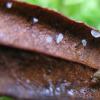
26-12-2025 21:19
Arnold BüschlenPithyella chalaudii Priou. Ist als Bryoparasit in

21-12-2025 09:32
Hello.A tiny ascomycete found embedded in wood in

18-12-2025 21:17
Pol DebaenstThe identification took me to Byssonectria deformi

24-12-2025 17:08
Hulda Caroline HolteHello, I have found this propoloid ascomycete on

21-12-2025 21:32
Pol DebaenstHello, Garden, Burgweg 19, Veurne, BelgiumOn 10/1
Psilachnum cassandrae
Marja Pennanen,
02-03-2010 10:26
This tiny wonder grows on leafs of Chamaedaphne calyculata and has been found ealier in North America.
Zotto: thank you for your help :)
Perz Piotr,
02-03-2010 11:10
Re:Psilachnum cassandrae
Wow, revelaton !
It is probably Antinoa !
regards
Piotr
It is probably Antinoa !
regards
Piotr
Eugene Popov,
02-03-2010 12:03

Re:Psilachnum cassandrae
This remarkable species is quite common on Chamaedaphne leaves in the North European Russia and in Western Siberia
Best regards,
Eugene
Best regards,
Eugene
Perz Piotr,
02-03-2010 12:34
Re:Psilachnum cassandrae
Super!
The morphology of the stipe cells and spore-shape shift this species clearly to the genus Antinoa (comp. Antinoa juniperinella). Sudently I does never seen the living features, for example contetnt of the paraphyses, and/or I have never seen the anamorph (it is intresting if is also the Chalara?).
Did you seen any mitosporic fungi assoc. with the teleomorph in-situ ?
regards
Piotr
The morphology of the stipe cells and spore-shape shift this species clearly to the genus Antinoa (comp. Antinoa juniperinella). Sudently I does never seen the living features, for example contetnt of the paraphyses, and/or I have never seen the anamorph (it is intresting if is also the Chalara?).
Did you seen any mitosporic fungi assoc. with the teleomorph in-situ ?
regards
Piotr
Eugene Popov,
02-03-2010 19:49

Re:Psilachnum cassandrae
Paraphyses as well as marginal hairs contain large colorless VB of elongate-type filling almost all cell volume. Small more or less globose VB also present in hyphae of the stipe cortex. Spores without lipid bodies or with very small subpolar LB-like granulae.
Best regards,
Eugene
Best regards,
Eugene
